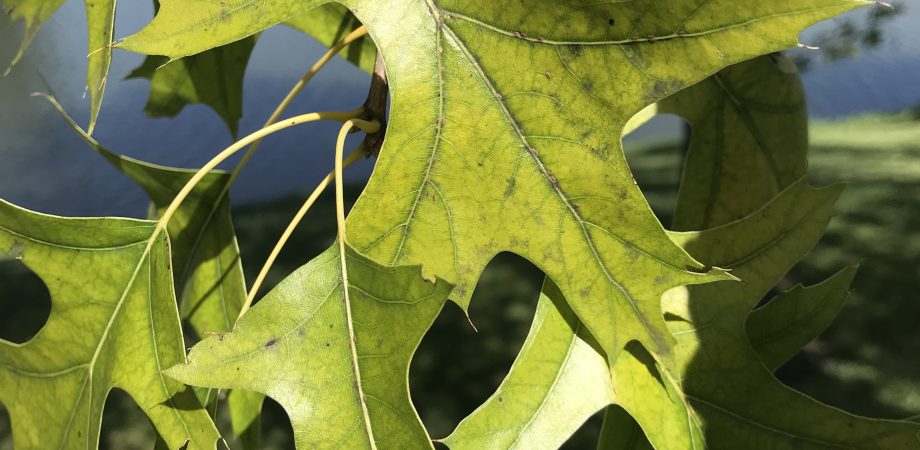Common Nutrient Deficiencies in Trees

Like turfgrass, trees need nitrogen, phosphate, and potassium. They also need other nutrients, including iron, manganese, and zinc. What happens when they’re lacking these, and how can you correct a deficiency?
A couple of common nutrient deficiencies in trees are iron and manganese. Iron deficiency is especially common in pin oak and river birch trees, while manganese deficiency is especially common in red maple and dogwood trees.
Both iron and manganese deficiencies are common when soil has a high pH. The alkaline soil makes nutrients less available to plants. Although there may be sufficient iron and manganese in the soil, the trees can’t access them.
The symptoms of iron and manganese deficiencies are similar. Leaf yellowing, known as chlorosis, occurs with both deficiencies. Small leaves and slow growth are other symptoms of both.
You may think that lowering the pH of the soil is the best solution to iron and manganese deficiencies. While that is an option, it’s not the easiest one. It’s simpler to supply the tree with nutrients in a form that will be available despite the high pH of the soil.
A solution to help you do that is Chloroburst L. It contains chelated iron, manganese, and zinc. The strong chelates make the nutrients available for long periods of time, even in soil with a pH as high as 10. Root injection is the best way to apply Chloroburst L to trees with a suspected nutrient deficiency. A well-timed application will reverse nutrient deficiencies and improve the color of leaves.
Healthy trees add to the appeal of the home lawns, commercial properties, or golf courses you manage—so be sure they have the nutrients they need to grow and thrive.







